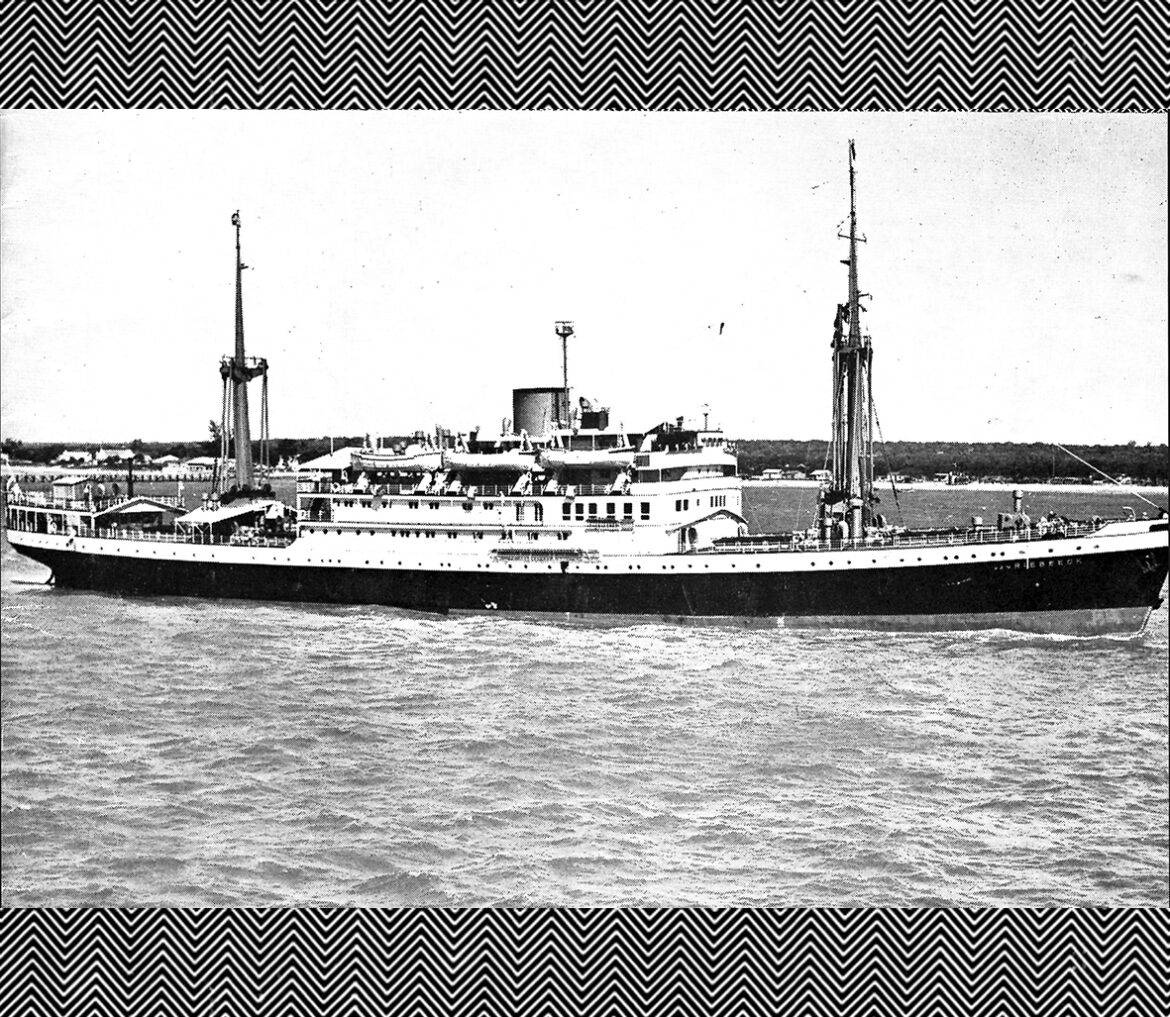Sixty years ago, m.s. Van Riebeeck moored on Dubai Creek. The passenger/freight ship had approached Dubai before, but previous payloads had to be transferred onto smaller crafts a mile offshore. On this visit, in October 1960, Dubai’s harbor was newly reshaped and dug out by British engineers, Austrian contractors, and undocumented laborers. That such a large ship cleared the creek’s sinuous S-curve—unthreatened by shifting depths and hull-crushing sandbars—was an event, a spectacle.
Anchored inside the city, a ship of this size made for unsubtle contrast with the landscape. An inert assemblage of manufacture, the Van Riebeeck and its five levels of interlocked, air-conditioned interiors were incomparable to anything on land. The carapace summoned more steel than could be found anywhere in Dubai, more probably than in the creek’s training walls that made the arrival possible. Surfaces were crenellated with a catalogue of aluminum fittings, lead paint, parquet floors, and linoleum runners, all stitched together with electrical wiring. The ship lit up like a bonfire in the city’s night sky.
Even more remarkable was that it moved, that it collapsed space between Dubai and the world. Its appearance on the horizon was as certain as its eventual departure. Time tables professed its schedule with certainty. There were, though, miscalculations: Stops in Mogadishu and Mombasa had to be cancelled; a collision with another carrier required two “murderously” hot weeks of repairs in Aden; between Kuwait and Basrah, there would be five days of quarantine during a cholera outbreak.
The ship had rooms for 237 passengers, and nearly everyone who embarked on this tour remained on board for all eight ports of call: Mukalla, Muscat, Dubai, Umm Said, Manama, Dammam, Kuwait, and Basrah. They were South African salespersons and commercially-minded diplomats. The lowest deck could carry as many cows as people above, plus 400 sheep, but much of the livestock this time had died from heat in Aden. Stores that survived were manufactured things—cotton towels, kitchen appliances, and whatever could possibly be provisioned in a tin can. For this tour, the Van Riebeeck’s every deck and galley was repurposed for display stands and vitrines. The ship, its people, and cargo composed a traveling exhibition: “South Africa’s Shop Window.”

